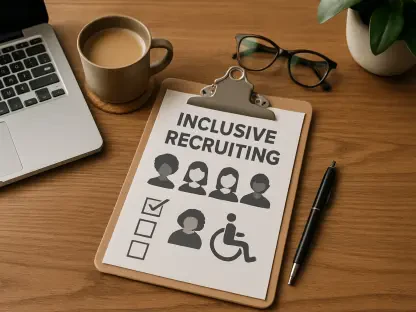As we dive into the complex world of workplace harassment, particularly from third parties, I’m thrilled to speak with Sofia Khaira, a renowned specialist in diversity, equity, and inclusion. With her extensive expertise in fostering inclusive work environments and guiding businesses on talent management, Sofia offers invaluable insights into how HR can navigate the challenges of third-party harassment and employer liability. Today, we’ll explore the evolving legal landscape, the critical role of HR in prevention, and practical strategies for protecting employees while maintaining a supportive workplace culture.
Can you explain what third-party harassment means in the context of the workplace, and how it differs from harassment by colleagues or supervisors?
Third-party harassment refers to inappropriate or hostile behavior directed at employees by individuals who are not part of the organization, such as customers, vendors, or contractors. Unlike harassment from co-workers or supervisors, which often occurs within the direct control of the employer, third-party harassment involves external actors over whom the company may have limited influence. This makes it trickier to address because the employer isn’t directly responsible for the harasser’s actions, yet they still have a duty to protect their employees from a hostile work environment.
Who are some common examples of third parties that might engage in harassment, and why is this a growing concern for employers?
Common examples include clients who interact with sales or service staff, vendors who visit company premises, or contractors working alongside employees. This is becoming a growing concern because workplaces are increasingly interconnected with external partners, and these interactions can expose employees to risks that aren’t as predictable or controllable as internal dynamics. For instance, a delivery driver or a customer at a retail store could make inappropriate comments or advances, creating an unsafe space for employees who are just doing their jobs.
Let’s talk about a significant legal case in this area. Can you walk us through the key issue in the Bivens v. Zep, Inc. ruling by the 6th U.S. Circuit Court of Appeals?
Certainly. In Bivens v. Zep, Inc., the core issue was whether an employer could be held liable for sexual harassment perpetrated by a third party—in this case, a customer. A saleswoman was subjected to unwanted sexual advances by a client during a site visit. She reported the incident to her manager, and the company adjusted her territory to prevent further contact with that client. She later filed a harassment claim, and the court had to decide if her employer bore responsibility for the third party’s actions, which set a precedent for how such cases are handled in certain jurisdictions.
How did the 6th Circuit’s decision alter the standard for employer liability in third-party harassment cases?
The 6th Circuit introduced a stricter standard for employer liability in its jurisdiction, which includes states like Michigan and Ohio. Previously, employers could be held liable if they knew or should have known that harassment was likely to occur. The new “substantially certain” standard means that an employer is only liable if they were practically certain that the harassment would happen and failed to act. This makes it harder for employees to win claims against employers for third-party misconduct, shifting more of the burden onto proving the employer’s foresight or negligence.
Even with this stricter legal standard, why do you believe HR still plays a pivotal role in addressing third-party harassment?
Legal standards aside, HR’s role is fundamental because it’s about more than just avoiding lawsuits—it’s about creating a workplace where employees feel safe and valued. If HR doesn’t prioritize preventing third-party harassment, it risks damaging employee morale, trust, and retention. Beyond that, ignoring these issues can tarnish a company’s reputation, making it harder to attract talent or maintain client relationships. HR is the frontline in ensuring that policies, training, and response mechanisms are in place to tackle these challenges, regardless of what the courts say.
What are some practical steps HR can take to safeguard employees from harassment by third parties?
HR can start by establishing clear policies that explicitly cover third-party interactions and ensure employees know how to report incidents. Setting up accessible reporting channels, like anonymous hotlines or dedicated email addresses, is crucial to encourage speaking up. Additionally, HR should work with management to adjust work environments when needed—like reassigning territories or limiting contact with problematic third parties, as was done in the Bivens case. Regular training for staff on recognizing and handling such situations, along with swift documentation and action on complaints, also goes a long way in showing commitment to employee safety.
Why is training for managers so essential when it comes to dealing with harassment complaints, especially from third parties?
Managers are often the first point of contact for employees reporting harassment, so their response sets the tone for how seriously the issue is taken. Without proper training, managers might downplay complaints, fail to escalate them to HR, or even inadvertently retaliate against the reporting employee. Training ensures they understand the importance of immediate action, proper documentation, and maintaining confidentiality. It equips them to handle sensitive situations with empathy and professionalism, which is critical for maintaining trust and preventing escalation, especially with third-party incidents that can be complex to navigate.
What advice do you have for our readers who are looking to strengthen their workplace policies on harassment, particularly from external sources?
My advice is to be proactive rather than reactive. Don’t wait for an incident to happen—review your harassment policies now to ensure they explicitly address third-party interactions. Engage with employees to understand their concerns and experiences with external parties, and use that feedback to tailor your approach. Invest in regular, scenario-based training for both staff and managers, emphasizing real-world situations they might encounter. Finally, foster a culture of transparency and accountability by making reporting easy and ensuring every complaint is taken seriously with prompt follow-up. Building this foundation not only protects your employees but also strengthens your organization’s integrity and resilience.









